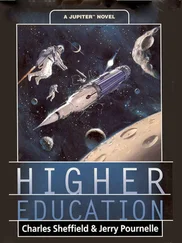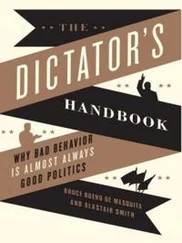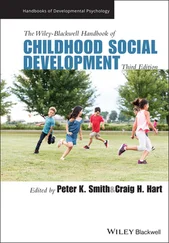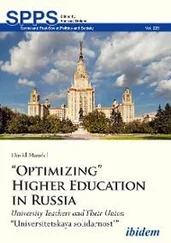The areas discussed here are all important areas of development of change agency. However, if such functions are carried out on behalf of and in isolation from students, then the opportunity for students to develop these change agency attributes becomes limited. Nor will learning about these processes of change consciously occur without reflection. Therefore, we suggest ensuring that students are included in these processes, treated as partners, and included in communication, and reflective discussions are facilitated, which might incorporate the role of more “academically neutral” university support.
The promotion of activist learning holds potential risk for academic staff (Ludlow 2010; Williford 2015), although this risk will in part be related to their standing and institutional capital (Ludlow 2010). The willingness to take such risks can relate to staff identities as professional activists (Costa et al. 2021a,b), also referred to as scholar‐activists (Williford 2015). Although many ESD educators and practitioners might not see themselves as activists, many could be described as such, based on activist characteristics of knowing that they cannot take a neutral position, the desire to change the world (Ollis 2008), and the championing and challenging for systemic change (Costa et al. 2021a). By encouraging activist learning for students, work itself becomes a place of activism for the educator and practitioner. Bubriski and Semaan (2009: 96) encourage the educator to push students to “come out of their comfort zone – to try something new and potentially scary”; maybe we as educators should also be challenging ourselves in the same way.
2.7 Conclusion and Recommendations
The SSH project is student‐led, aligned to the formal curriculum, and aims to enact social change through providing opportunities for exploration of sustainable living for future students, inspiring and informing a wider student body about sustainable living, developing change agency skills, and changing habits and behaviors of the students residing in the SSH itself. We therefore feel this project deserves the moniker of “activist learning.”
As with most activism‐oriented educational projects, the SSH project is limited in its lack of longitudinal evaluation of the impacts of such an approach. Such evaluation across a range of timescales is needed to help us understand what makes quality, not just any, activist learning.
In Table 2.3we provide a series of recommendations that can be used to support activist learning across the formal, non‐formal/informal, and hidden curriculum.
Table 2.3 Recommendations to support activist learning.
| Curricula position of activism |
Recommendation for educators |
| Activism projects in the formal curriculum |
Create a range of project opportunities to suit different students and stages of activist engagement, from student‐initiated projects to choices of prescribed projectsBe sensitive to different cultural interpretations and associations of activismEncourage reflection on links between activist projects and the Sustainable Development Goals and sustainability competenciesUse sustainability competency frameworks (e.g. UNESCO 2017) to support reflection framingProvide support for students particularly with negotiating different avenues of power, governance, and decision‐making, but include students as partners in the processBuild in evaluation of the impact of activism projects on students at different timescales (gaining permission/communication channels for future contact for longer‐term longitudinal evaluation)Encourage and support more staff to engage students in activism projects throughout their degrees |
| Using the formal curriculum to support informal and hidden curriculum activism |
Include theories of activism and activist learning in the formal curriculumEmphasize the importance of inclusion and participant diversity as part of activism and sustainability requirementsIntroduce reflective models and case studies of reflection used in activismEmphasize the role of reflective practice in learning and project successEncourage students to question what they see and what they want from the campus environmentEncourage students to understand their power and agency as key stakeholders in the university and wider communities.Help students to understand the structures of universities and other organizations that can support change (such as Students' Unions)Develop a curriculum which aims to inspire and empower students to take actionUse the formal curriculum to develop effective group and communication skills, techniques, and understanding.Encourage quality relationships with academic and non‐academic staff, providing a safe place to seek support to initiate projects |
| Informal activism with staff involvement |
Ensure clear boundaries, responsibilities and expectations of staff and students are discussed at the start and reviewed. What support do students want from staff?Encourage consideration of the impact of activities on inclusion of diverse participantsInvolve academically neutral staff (e.g. university sustainability practitioners) as direct contact with students to reduce tensions and conflicts between different staff roles, particularly with projects in the student's more private spheresBuild in facilitated reflective review opportunities, with academically neutral staff where appropriateUnderstand that students have different starting points and expectations of activism projectsProvide support for students particularly with negotiating different avenues of power, governance and decision making, but include students as partners in the process throughoutSupport student ideas for activismSupport the continuation of projects, maintain relationships with key stakeholders, support the transfer of knowledge between student yearsSupport students with managing and interpreting failure |
| Informal activism without staff involvement |
Foster a culture of openness and support for activism within the universityBe available as a critical friend |
As an ESD practitioner it is all too easy to uncritically extol the virtues of activist learning projects, and the role of such activist learning projects in the informal curriculum for the potential development of a wide range of sustainability competencies. Yet, our reflections uncover questions about the limitations within the informal curriculum, including whether the informal curriculum alone can deliver the learning potential the projects are capable of, without at least some informal structure for guided reflection and discussion. Yet, imposing a structure for reflection detracts from genuine student‐ownership of projects, and might not be possible in genuinely student‐led activity.
We might then look to the formal curriculum to deliver the potential of activist learning. The formal curriculum might allow us space for student‐initiated activist projects and opportunities to structure assessment around a set of sustainability competencies, allowing deeper reflection and development of these competencies (see Robinson and Molthan‐Hill 2021), and space for critical discussion and debate around deeper, systemic issues. Publicly declaring an activist agenda in learning and assessment design is itself controversial, with the risk of accusations of promulgating a particular political agenda or being at odds with other educational priorities and agendas. Yet activist learning projects can deliver to many different educational agendas from employability, student experience, and students as partners. It is also difficult in the formal curriculum to genuinely provide the space for mistakes and failure. Activism projects can also come with serious challenges from burnout to conflict, and the formal curriculum does not allow students to walk away from projects which are no longer working for them.
Читать дальше












